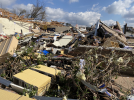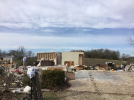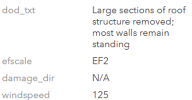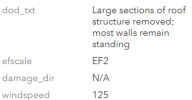tornado examiner
Member
Everyone on this site was so verbally angry when Mayfield and other tornadoes from that day were shafted of the rating they should have gotten.You summed it up perfectly.
Year after year, waiting for the streak to break. Candidate after candidate, coming close, but no cigar. Theory after theory, about how the next EF5 would hit the Jackson CWA or a big city or wherever.
And then, suddenly, Grand Forks releases a statement, and the longest streak between two 5s is suddenly over.
Like, we expected the next EF5 to crash through Oklahoma City or Jackson, and be the costliest tornado ever, and then there was a rural tornado that just so happened to strike a train at peak intensity and the 12 year streak literally just ended. If that doesn't prove how nature is random, I don't know what does.
And the near universal backlash across the entirety of social media is likely part of what caused this new “precedent” to happen.
What bluntly pointed out how flawed our methods for accessing tornado intensity are.
We were all there, and it was a mess.




